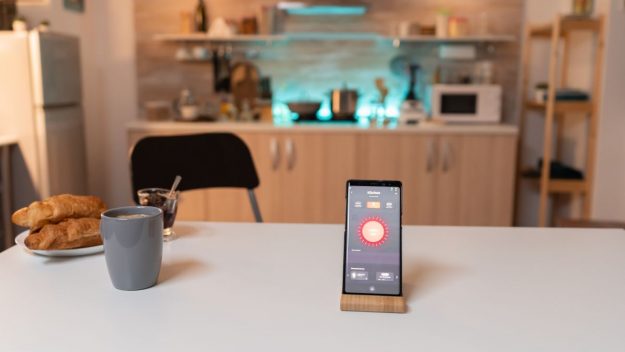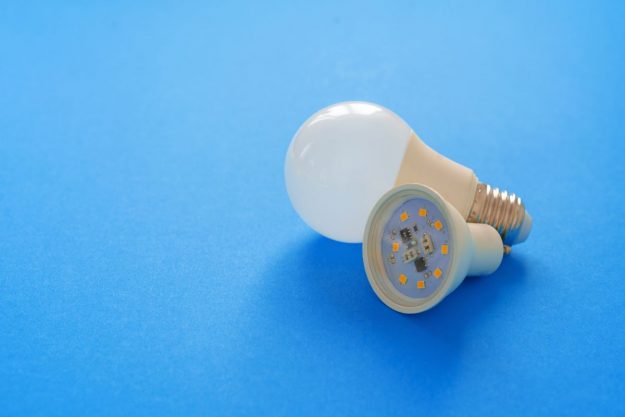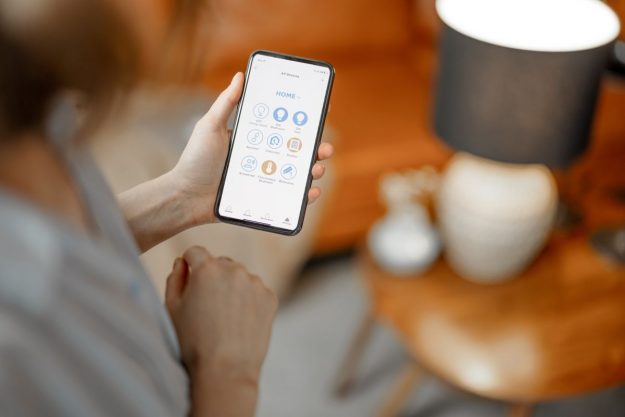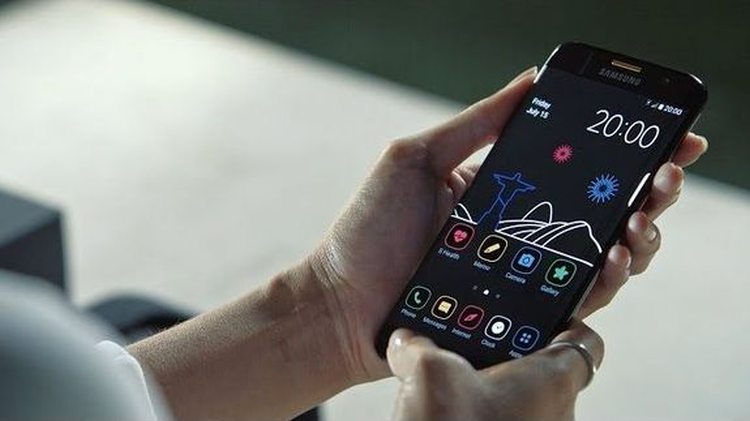Over the past decade, the constant rise of electricity prices has made many consumers more conscientious about using electric power.
Many of those conscientious people may find it frustrating – to put it calmly – that their daily or even hourly efforts to turn off devices they’re not using hasn’t delivered the results they’d expected. The blame belongs to the growing number of smart bulbs popularly known as “vampires” that populate today’s typical home.
So the question arises: do smart bulbs use electricity when turned off?
Smart lights do use power when off. Because of the advanced technology they use, they do leech electricity even when the lights are off but only in very small amounts. Whether on or off, they draw power to operate at a distance.
The “Vampires” are typical energy suckers. Smart lights use around 0,25W on average per hour when off, which is the equivalent of less than $0.001 per hour based on today’s electricity prices (around $0.1 per kWh in the US).
This means that a smart bulb, when off, will consume about $8 worth of electricity per year. Not too bad, right?
What is a Smart Bulb?

A smart bulb is a lighting fixture with an internet-capable LED light bulb that allows lighting to be customized, scheduled and controlled remotely.
Smart bulbs can be controlled by a smart home system or stand-alone wireless controller. With the integration of Bluetooth, Wi-Fi and ZigBee or a proprietary connection for a home, smart bulbs typically allow users to set up “rules” for their lights.
You can turn them on and off at certain times of day, dim the lights when it’s bright outside, or choose unique color settings for different events.
Smart bulbs are an ecosystem of devices that can communicate with each other via internet connectivity. Smart lights use up to 80% less energy than traditional incandescent light bulbs and typically last 25 times longer.
You can equip smart bulbs with additional features like built-in cameras, built-in speakers, and presence-sensing capability. It is a truly efficient and smart way of living.
How Do Smart Bulbs Work?

Smart bulbs are generally compatible with a home’s Wi-Fi network and can be controlled via smartphone apps. The bulbs use wireless transmissions to send and receive their signals from a central hub, which you can plug into the router via an Ethernet cable.
Smart lights come with a bridge near the router and connect directly to the internet wirelessly or through a cable.
Smart bulbs use LED light, which is more energy-efficient than incandescent or fluorescent lighting because it requires less power to operate and keeps cool without an external heat sink.
Smart bulbs typically contain three small components: a control panel (to operate the bulb), a radio (for communication with other devices and to send signals over Wi-Fi), and an LED light source.
They can be controlled by voice commands, via smartphone apps, or from a digital assistant like Amazon’s Alexa, Apple’s HomeKit, the Google Assistant, or Microsoft’s Cortana.
You can use these smart lights with other smart home components like door locks, thermostats, and security cameras to create an integrated system of devices for everyday life in your home.
Why Do They Use Power When They Are Off?
Smart bulbs use power when off because they actually need to be on to a degree to receive their next set of instructions.
It means that the bulbs draw small amounts of energy to stay connected to your Bluetooth or Wi-Fi while they wait for your next command.
The meagre yet relentless connection requires that small amount of power. However, they do not consume much electricity, and this amount is negligible compared to the power they save.
How Much Power do Smart Light Bulbs Use When Off?
“How much” can differ from different models and manufacturers, but on average smart bulbs use around 0,25W per hour when they are turned off. This translates to a meager 0.00025 kWh used per hour.
In USD, this means that a turned off smart bulb requires less that $0.001 per hour or around $8 per year. (Based on today’s average electricity cost of $0.1 per kWh)
IMPORTANT: We are talking here about the energy they use when turned off. The actual value is even lower, because you won’t keep them turned off 24/7, 365 days a year.
Six Main Benefits of a Smart Bulb

Intelligent bulbs have a ton of benefits that you will surely enjoy. Once you start using them, you won’t want to turn back to regular ones. I sure didn’t!
Here are some of the best things about them:
1. Save Money and Energy – They are more efficient than regular lightbulbs, and therefore they do not consume as much energy, which means fewer costs for your electricity bill at the end of each month.
2. Automatically Turn on and off – You can automatically schedule your smart bulbs to turn on and off, which means you won’t have to worry about it when returning home late at night.
3. Customizable – You will be able to customize your home’s lighting by choosing between different color settings like warm white or cool daylight. You will also get more advanced features like strobe and fade effects, as well as various other color schemes to choose from and set the mood.
4. Integrate with other Intelligent Devices – These bulbs will be able to communicate with your digital assistant, thermostat or security cameras.
You can set them up this way, so they automatically turn on when someone enters the room through a camera motion sensor. You can also make automation, like have it dimmed at night time when no one is home.
5. Voice Control – You will have the opportunity to control your smart bulb with your voice by using Alexa, Google Assistant or Cortana. You can say “turn on”, and it will immediately turn on wherever you want in your home without having to move an inch! Sci-fi movies are a reality now!
6. Convenience – It means you can program them at night when going to sleep or in the morning before leaving for work, which helps to eliminate any need for human interaction with these lights.
What Are the Potential Cons?
Hacks – a hacker can hack into your smart bulb and take control of it which means they might be able to capture your credentials and access your personal information.
To ensure safety, you should research innovative bulb products for known vulnerabilities, confirm the vendor’s up-to-date software, and run intelligent devices on an isolated network that does not permit access to personal data.
Connection – Although these devices are usually reliable, you might experience connection issues from time to time (especially if you don’t have a strong Wi-Fi signal).
Best Smart Bulb Brands
There’s a wide variety of intelligent bulbs to choose from, with some really cheap options available on the market. However, it’s the slightly more expensive ones that actually offer the best performance and most features.
Here are some of the best bulb brands on the market today:
Philips Hue
One of the most popular intelligent lighting brands on the market, it has been around for many years. The company offers a wide range of products, including LED light bulbs (E12 & E26), lamps, starter kits, motion sensors and dimmers.
You can control them all with their app, which is available for iOS Android. They support ZigBee or Z-Wave.
Check out various Philips Hue products on Amazon (affiliate link)
C by GE
This company offers a wide variety of products, including LED light bulbs (A19), lamps and ceiling fixtures. Their intelligent home app is compatible with both iOS and Android devices and Amazon Alexa or Google Assistant voice control assistants. Their products can use Bluetooth.
Check out the range of products on Amazon (affiliate link)
Wiz
It offers smart LED light bulbs (E27 & B22), lamps, and motion sensors. Their app is compatible with both iOS and Android devices and Amazon Alexa or Google Assistant voice control assistants; however, they support Z-Wave and Wi-Fi only.
Check out the Wiz smart bulbs here (affiliate link)
Hive Active Lighting
You can operate E27 / B22 intelligent light bulbs from your Hive app, available on iOS and Android devices. Their bulbs are compatible with Alexa, Google Assistant or IFTTT integrations. They also have a smart thermostat via the app and motion sensors for additional security around your home.
Check out their products on Amazon (affiliate link)
Trådfri IKEA
You can set the mood with this smart light bulb that you can control with the IKEA Trådfri app. It is available on both iOS and Android devices.
Trådfri is compatible with Amazon Alexa or Google Assistant voice assistant assistants and ZigBee & Z-Wave protocols for connectivity to your other home automation devices like door sensors and motion detectors.
If you don’t want to visit an Ikea store, you can check out the options on Amazon (affiliate link)
Conclusion
Smart bulbs are very convenient and can be used with other smart devices to enable automation. However, they use electricity when turned off; however, the use is not much compared to the standard bulb.
It’s essential to look at the standby power when purchasing smart bulbs since it can impact energy usage on a larger scale – but generally, the costs are extremely low, as we already saw in today’s article.

